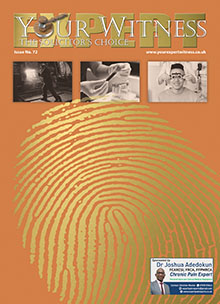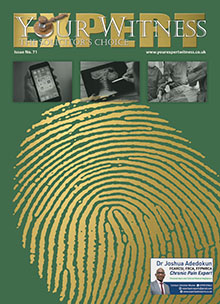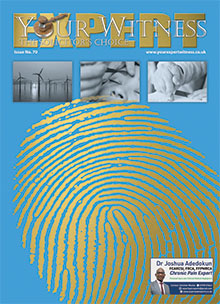Two workers were dismantling a steel chimney at a manufacturing plant. The chimney caught fire and there was doubt about whether the fatalities were caused by the fire or the subsequent fall from height.
It transpired that the chimney was coated internally with a bituminous residue. The HSE maintained that the bitumen caught fire and the flames spread to the rest of the chimney. However, we had doubts that the flame from the burner would start a fire and that the fire would be self-sustaining in that way.
Tests were carried out on a sheet of metal of the same thickness to determine the area that would be heated by the flame, the metal temperature and the time for the heat to decay. Combustion tests were also carried out on a sample of the residue to determine the temperature at which it would catch fire and the temperature for the fire to continue. Putting the two together, we concluded that it was unlikely that the cutting torch would have caused the whole chimney to catch fire.
Further evidence showed that the propane gas supply to the cutting torch may have been leaking. The gas could have collected at the base of the chimney and been ignited by a falling piece of smouldering bitumen. However, this did not quite fit with the factual evidence, such as it was.
The managers of the factory had been charged with manslaughter, but as more doubt was cast on the HSE and Forensic Science Service evidence the charges were reduced and a custodial sentence was avoided.
A joiner was using aerosol sealant around window frames. He was working alone in the room when the canister exploded. The medical evidence suggested that the base of the canister had hit his chest with such force that his heart was fatally damaged. The bruising was consistent with this.
So why did the canister explode? The weather was cold: it was March in Shetland. It is not unusual to warm a canister slightly so that it works better; however, this was a building site and there was no obvious source of heat.
Metallurgical examination of the canister was carried out by HSL but proved inconclusive. It was not clear if there was a fault in the seal between the top and the cylinder. Strangely, however, the label on the canister was missing but may have been present at the scene.
There was a range of expert opinion as to what might have happened; but the only person who actually knew was the deceased. So far the inquiry has not come to a conclusion.
In some investigations the issues can become quite technical and explaining them to a jury with limited scientific knowledge poses a challenge which we relish. Diagrams, photographs, models and even computer animations can help to explain difficult points. Although civil cases will be decided on the balance of probabilities, in a criminal case that is not sufficient and the prosecution will need to prove its case beyond reasonable doubt.
But in the end there are cases where no-one will ever know what happened.



 “Speculate before you accumulate. I am a long term regular writer and advertiser in 'Your Expert Witness - the Solicitor’s Choice'. This investment pays me substantive dividends; I get more Expert Witness work with every issue. Not only solicitors and barristers but also judges seem to read it. It is a win-win situation. Success breeds success; I must continue to write and advertise.”
“Speculate before you accumulate. I am a long term regular writer and advertiser in 'Your Expert Witness - the Solicitor’s Choice'. This investment pays me substantive dividends; I get more Expert Witness work with every issue. Not only solicitors and barristers but also judges seem to read it. It is a win-win situation. Success breeds success; I must continue to write and advertise.”
























































































































